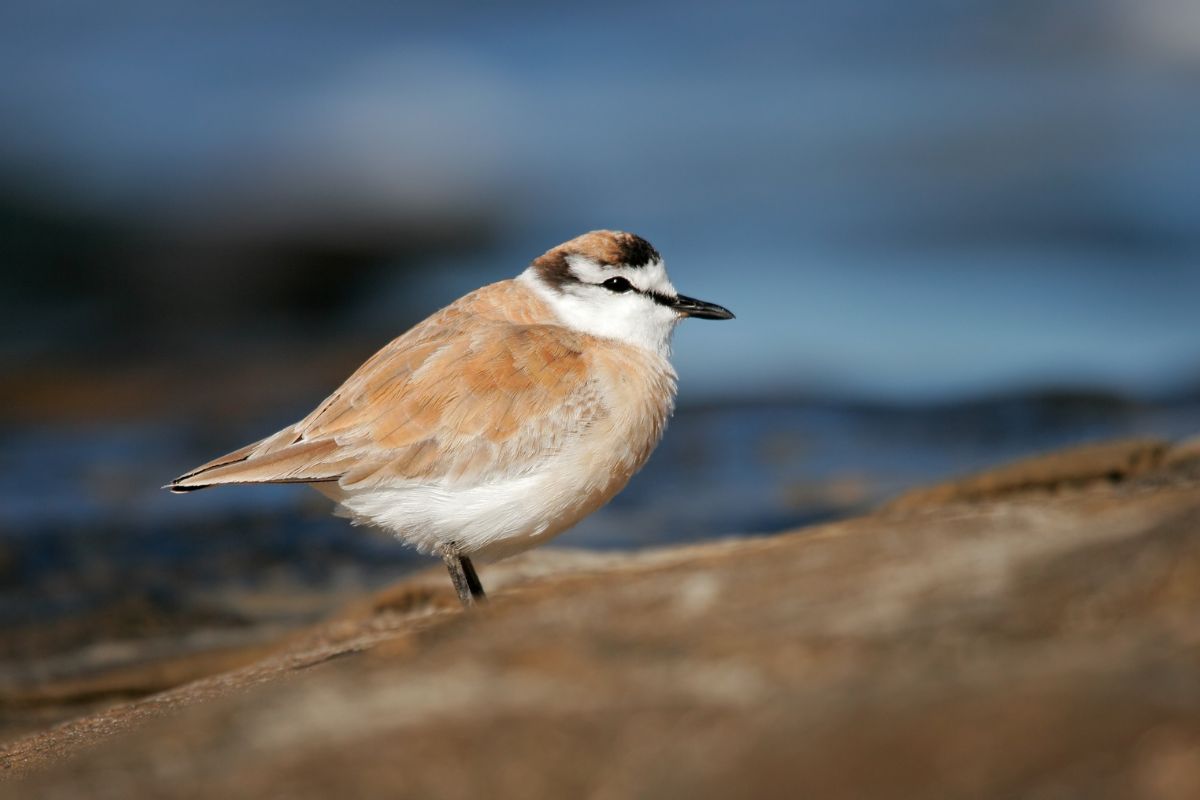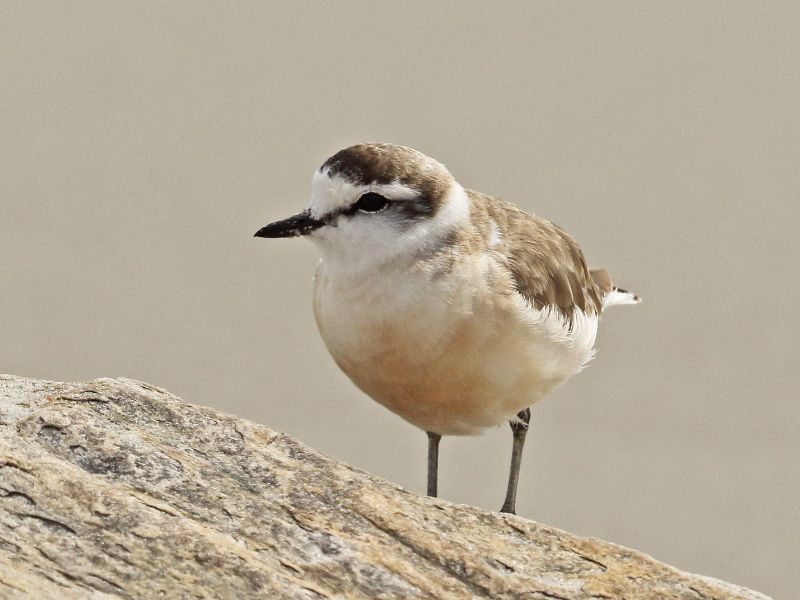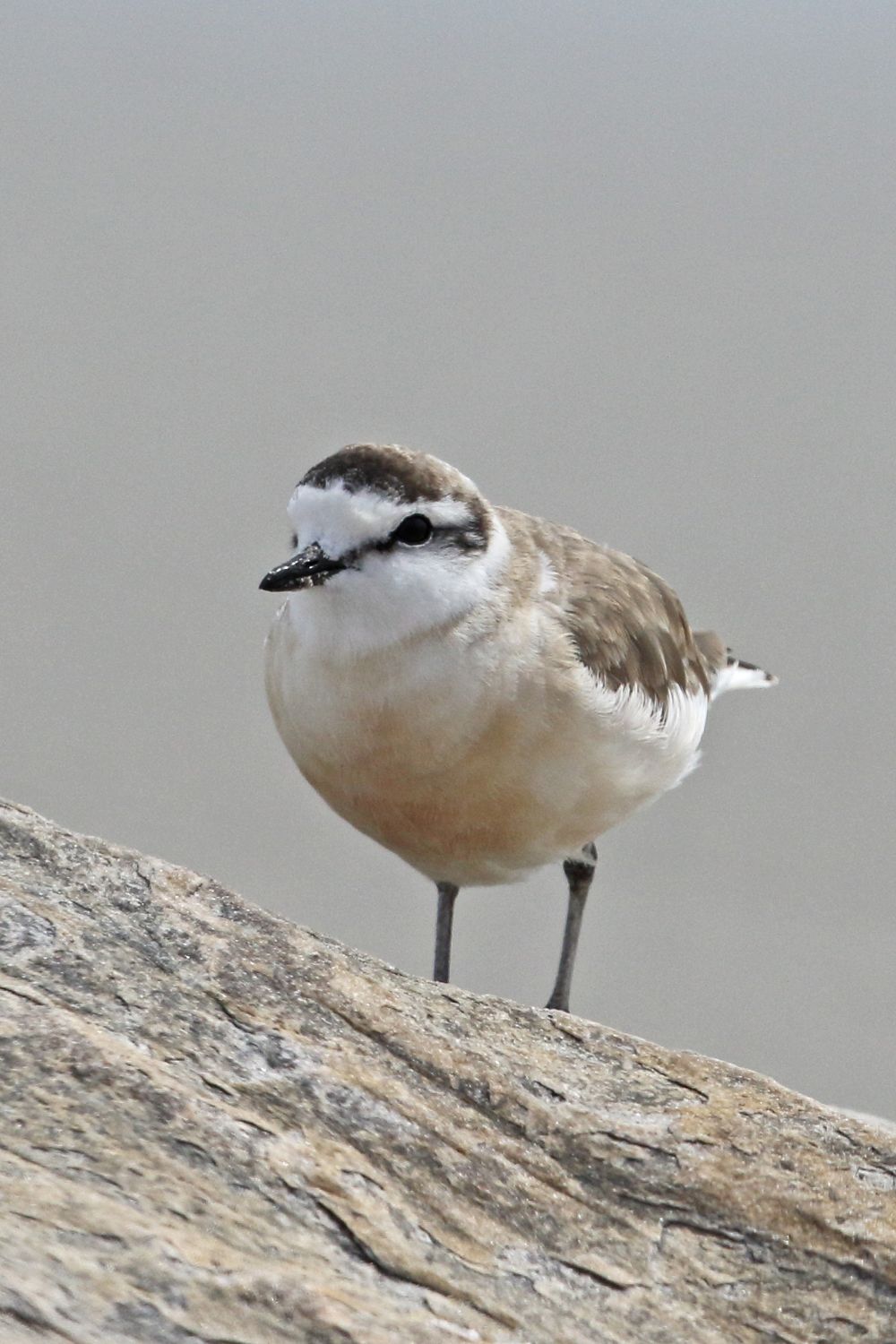White-fronted plover | Vaalstrandkiewiet R246
The white-fronted plover or white-fronted sand plover is a small shorebird of the family Charadriidae that inhabits sandy beaches, dunes, mudflats and the shores of rivers and lakes in sub-saharan Africa and Madagascar. It nests in small shallow scrapes in the ground and lays clutches of one to three eggs.
White-fronted ploverIdentification:
The adult white-fronted plover is white below and grey-brown above. The eyes are brown and the bill and legs are black. The male has a more conspicuous black line behind the eye and usually small dark patches on the sides of the breast. The female have a similar appearance to adult males but the black crown band is less defined and may even be absent. The immature plover lacks any black on the head but a white band across the nape is present. The nestling is grey mottled above and white below with black forming lines down the centre of the crown.
White-Fronted Plover Call
In flight the call is a soft ‘wit’ or ‘twit’ or ‘twirit’. When disturbed a loud ‘kittup’ or a long drawn out ‘churr’ is heard.
White-Fronted Plover Feeding & Diet
The white-fronted plover forages during both day and night, using the typical plover run-stop-search technique. This consists of running around, stopping suddenly to peck at an item and then running again. Prey can be pecked from the surface of water, or caught with shallow jabs, inserting less than half of the bill into the substratum. Another method used to forage is foot-trembling, which involves vibrating the toes on substratum to disturb small insects or force invertebrates to the surface
The white-fronted plover mainly eats insects and aquatic invertebrates. It forages by day and night using the typical technique of plovers. The plover runs across the ground, stops and then searches for prey to pluck from the ground. It also stands while trembling its feet which disturbs invertebrates.
-----
Call us and schedule your listing today! Contact Us
Copyright © 2025 Hermanus Online Magazine. Web Development by Jaydee media.



